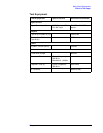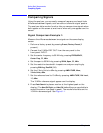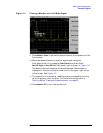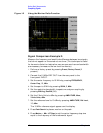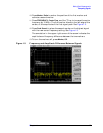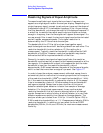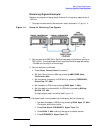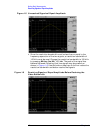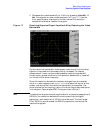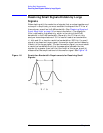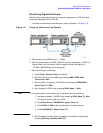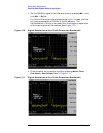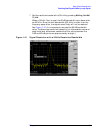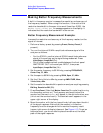
Chapter 1 15
Making Basic Measurements
Resolving Signals of Equal Amplitude
Resolving Signals Example:
Resolve two signals of equal amplitude with a frequency separation of
100 kHz.
1. Connect two sources to the analyzer input as shown in Figure 1-4.
Figure 1-4 Setup for Obtaining Two Signals
2. Set one source to 300 MHz. Set the frequency of the other source to
300.1 MHz. The amplitude of both signals should be approximately
−20 dBm at the output of the bridge.
3. Set the analyzer as follows:
a. Press Preset, Factory Preset (if present).
b. Set the Y-Axis Units to dBm by pressing AMPLITUDE, More,
Y-Axis Units,
dBm.
c. Set the center frequency to 300 MHz by pressing FREQUENCY,
Center Freq, 300, MHz.
d. Set the span to 2 MHz by pressing SPAN, Span, 2, MHz.
e. Set the resolution bandwidth to 300 kHz by pressing BW/Avg,
Res BW, 300, kHz.
A single signal peak is visible. See Figure 1-5
NOTE If the signal peak is not present on the display, do the following:
1. Increase the span to 20 MHz by pressing SPAN, Span, 20, MHz.
The signal should be visible.
2. Press Peak Search, FREQUENCY, Signal Track (On)
3. Press SPAN, 2, MHz to bring the signal to center screen.
4. Press FREQUENCY, Signal Track (Off)





